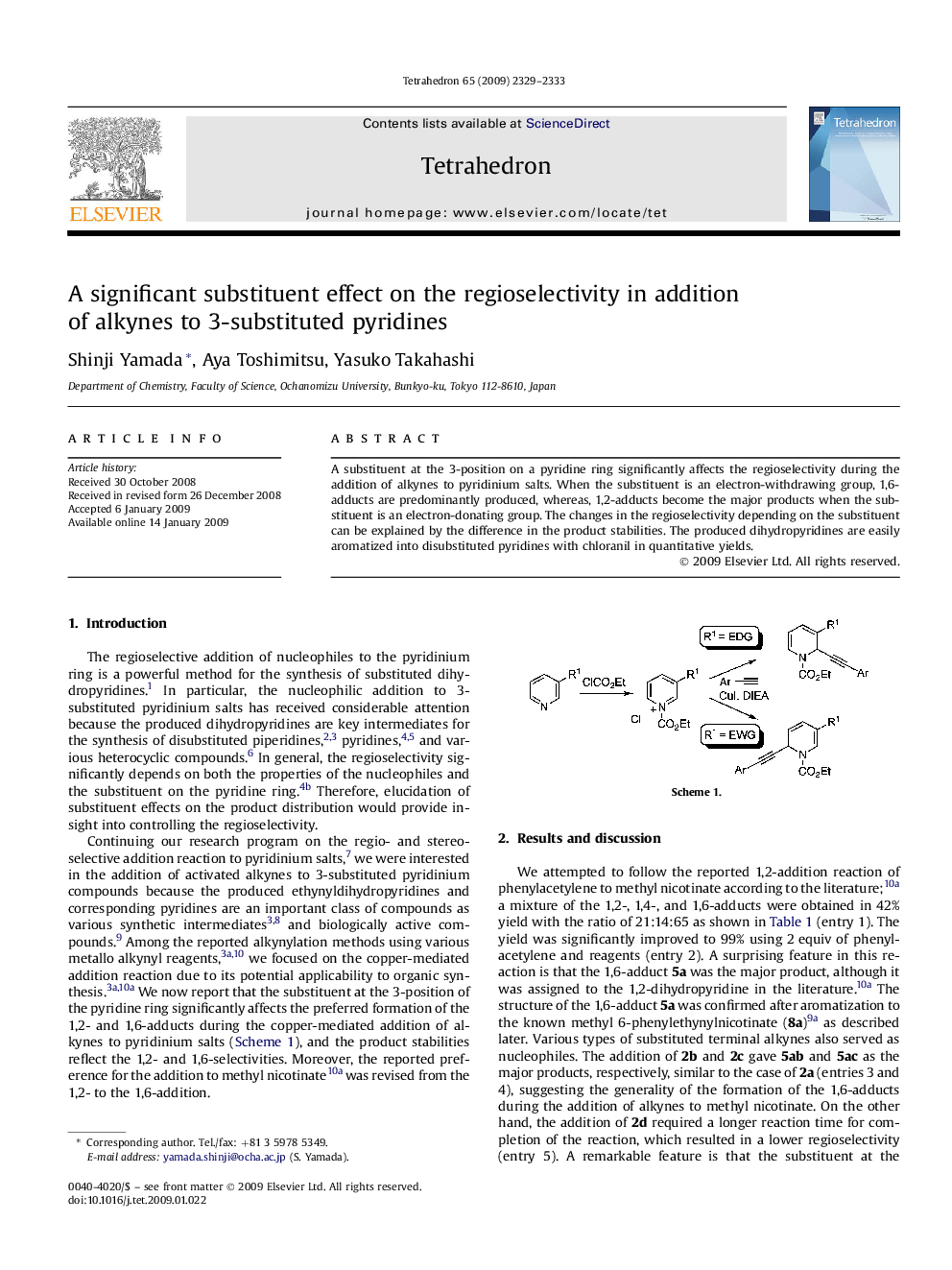| Article ID | Journal | Published Year | Pages | File Type |
|---|---|---|---|---|
| 5223257 | Tetrahedron | 2009 | 5 Pages |
Abstract
A substituent at the 3-position on a pyridine ring significantly affects the regioselectivity during the addition of alkynes to pyridinium salts. When the substituent is an electron-withdrawing group, 1,6-adducts are predominantly produced, whereas, 1,2-adducts become the major products when the substituent is an electron-donating group. The changes in the regioselectivity depending on the substituent can be explained by the difference in the product stabilities. The produced dihydropyridines are easily aromatized into disubstituted pyridines with chloranil in quantitative yields.
Graphical abstractDownload full-size image
Related Topics
Physical Sciences and Engineering
Chemistry
Organic Chemistry
Authors
Shinji Yamada, Aya Toshimitsu, Yasuko Takahashi,
